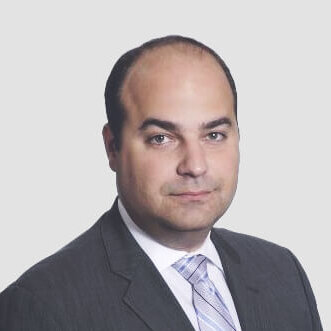
As COO of Alter Domus, I have been able to observe firsthand how our clients’ COOs are steering their firms through a period of radical transformation for private markets.
The role of COO in private markets has become more important and complex than ever for a firm’s long-term potential.
Returns are still paramount to a firm’s success, but as the industry grows and matures, solid operating infrastructure is a key predictor of front office performance. Investor reporting and regulatory compliance are more demanding, technology and AI are transforming the way firms collate, analyze, and harness data – both in the front office and back office.
Firms are also adapting to new forms of financing and routes to liquidity, including NAV loans to continuation funds, as well as the rise of the non-institutional investor as a key constituent of the LP base.
Responsibility for staying on top of all these changes – and others – ultimately funnels down to the COO’s desk.
So, as 2025 gets underway, here are some of my predictions and outlooks for the AI, M&A, fundraising and macro-economic trends that will keep private markets COO’s busy for the next 12 months:
Prediction 1: The global economy should grow – but inflationary pressures and macro uncertainty will linger
We are optimistic that after the recent interest rate cycle, 2025 should see slow to moderate growth, but several critical uncertainties remain.
Monetary policy shifts, geopolitical shifts and energy transition remain on the risk radar, and we are unlikely to see inflationary and interest rates trends returning to pre-pandemic levels in 2025, even after a series of rate cuts by central banks in the US, UK and Europe.
That said, COOs will take comfort from the fact that rates have come down and stabilized from where the market was a year ago. This does provide investors and businesses with clarity on financing costs and how to price risk, which can support investment and business confidence.
Central banks still must walk a tightrope, however, between cutting too fast and reigniting inflation or cutting too slowly and putting the brakes on an economic recovery.
Geopolitical risk also continues to linger, with the Middle East conflict, Ukraine war and tensions between the West and China all contributing to uncertainty. Further disruptions in trade, technology, and supply chains are other risks.
Prediction 2: Exit activity should recover – but only moderately
Interest rates are coming down, but remain elevated when compared to rates during the last decade. Financing costs for deals remain relatively high, which will keep the pressure on valuations and exit opportunities.
Lower rates are welcome, but investors and managers are still assessing what the “new normal” looks like, which can complicate exit timing plans.
Managers can’t bank on market growth and multiple expansion to drive asset valuations on exit, so firms will continue to focus on operational improvements as a key growth lever. Operational and strategic expertise has become an increasingly important part of portfolio value creation stories, albeit a more challenging and time-consuming one.
IPOs are a less reliable exit route for private equity firms, and if market conditions remain suppressed, firms will find it hard to justify going public.
The same economic uncertainties may make for cautious dealmaking for strategic and private equity buyers too.
Industry innovation cannot be counted out to provide returns and liquidity, but the change from the historically strong exit status quo to an emerging moderated stance is a concern.
Prediction 3: Big platforms to emerge as the big winners as fundraising reopens
The private equity industry has suffered from a severe bout of indigestion during the last two years. In 2021 the industry raised roughly double the amount of capital than the long-term annual average, fully expecting to be able to deploy and realize value from this capital at the same pace observed during the M&A boom in the years leading up to 2021.
Interest rates and inflation, however, saw M&A activity grind to a halt, leaving managers sitting on large piles of dry powder that they were unable to deploy and large asset portfolios that they were unable to exit. This saw fundraising for new private equity funds dry up, as investors were not receiving any distributions back from existing allocations to recycle into the next generation of funds.
If jammed up M&A markets begin to unlock in 2025 as interest rates come down and buyers and sellers feel more comfortable around asset valuations, the private equity machine will begin moving again, and fundraising volume should improve.
The last two years, however, will have long-term impacts on the industry. In a tighter fundraising market, we have seen a divide between large private markets platforms and middle-market franchises.
Investors have moved to consolidate portfolios and make bigger allocations to a smaller cohort of managers – figures from consultancy Bain & Co showed that the 10 largest funds closed by mid-May 2024 accounted for almost two-thirds (64%) of total capital raised.
Even if the private equity fundraising wheels do start turning again in 2025, we still expect to see a widening fundraising delta emerge between large global private markets platforms and select, top-performing sector specialists, and the rest of the private equity market.
Prediction 4: AI will offer huge opportunities – but only for users who are prepared
Technological advancement, particularly in automation and AI, promises to continue its progress, offering benefits to productivity, but also posing potential challenges for advanced economies and workforces.
AI has already reshaped the private equity back-office and more recently has been used to support the front office too. There are already firms in the market that have developed proprietary AI-powered tools that are filtering deal opportunities and presenting dealmakers with lists of potential deal targets.
AI is impacting fund administrators as well. At Alter Domus, for example, AI is making its way into key operational processes and being piloted in various services.
While we do not expect an overnight revolution in quality and productivity, we do see AI as a key tool to support differentiated client experiences and scalable growth into the future. Laying strong groundwork is incredibly important for being able to use these tools well and Alter Domus continues to make investments in its technology infrastructure and importantly its data management capabilities to be able to get the greatest possible benefit from AI.
Prediction 5: “Alternative” sources of liquidity and fundraising will become mainstream
The lack of liquidity in the private markets sector during the last 24 months has driven innovation and enterprise, as stakeholders have explored new options for securing liquidity at a time when M&A and IPO markets have been effectively shuttered.
NAV financing (loans secured against the assets in a private equity fund) has grown substantially and managers have used it to make distributions to investors. We have also seen the secondaries market (where investors buy and sell stakes in existing private equity funds) evolve, with continuation funds (where managers offer investors the option to take liquidity or roll their interests in an asset into a new structure) emerging as a mainstream exit option for firms. We expect these innovations to remain a part of the industry for the long term, even when the current liquidity constraints ease.
Another big shift on the horizon for private equity is the democratization of the asset class. Historically, private equity’s illiquidity and high investment minimums have kept it out of reach for most individual investors, but there is a big focus across the industry to open up the asset class to individuals.
Firms are investing significant resources in building out their private wealth teams and there has been huge momentum behind the launches of so-called ‘semi-liquid’ fund structures that provide investors with more flexibility around liquidity.
Tokenization and blockchain are other emerging technologies that managers are exploring to make private equity more accessible to individual investors.


